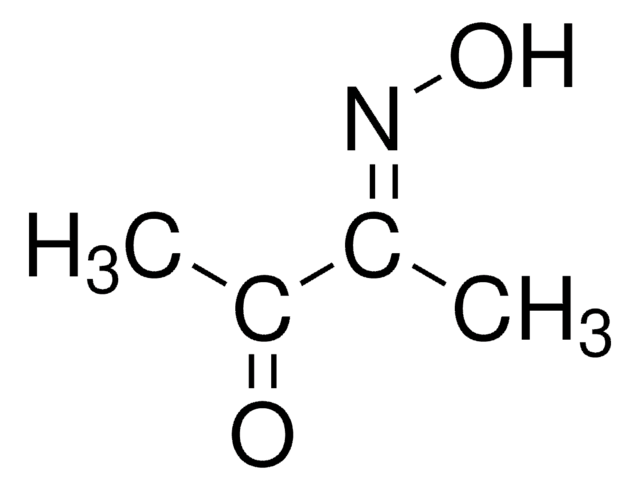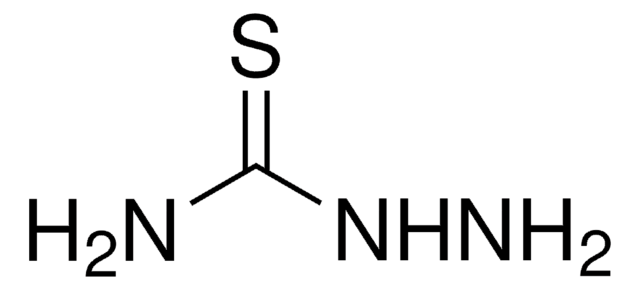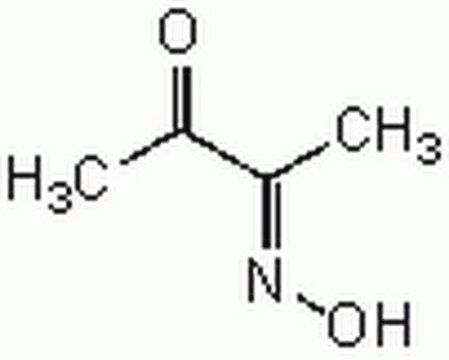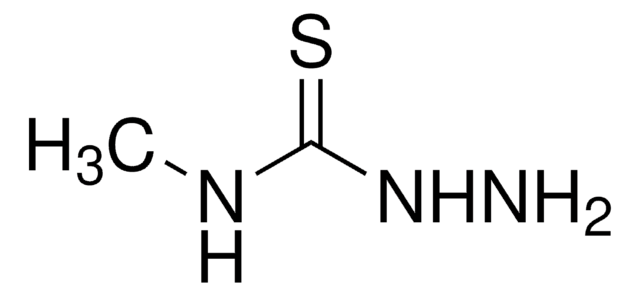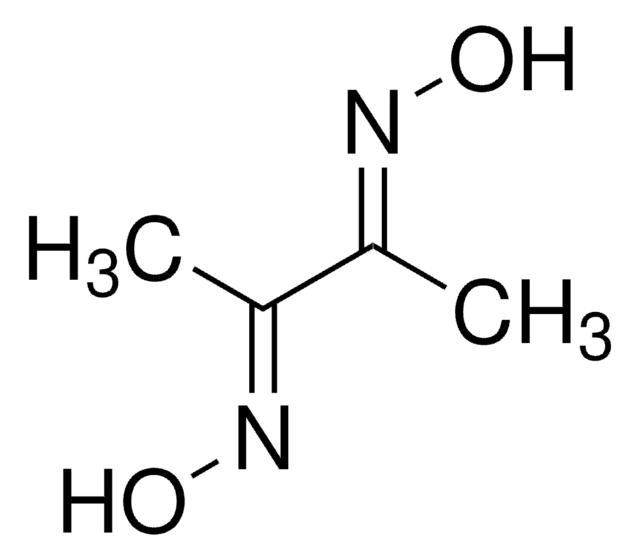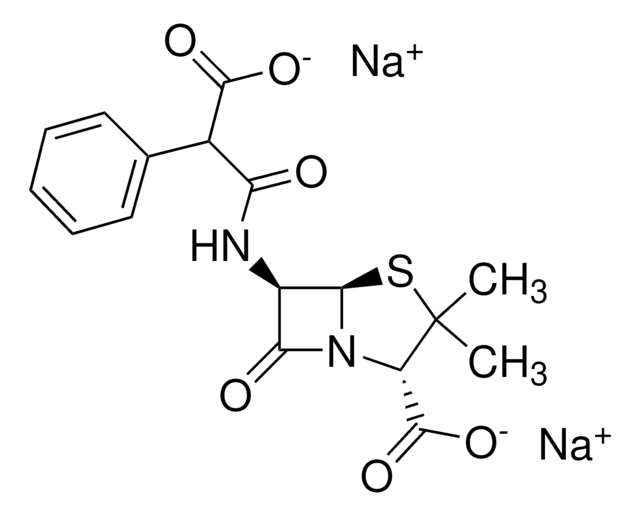Kluczowe dokumenty
31550
2,3-Butanedione monoxime
for spectrophotometric det. of urea, ≥99.0%
Synonim(y):
BDM, Biacetyl monoxime, Diacetyl monoxime
About This Item
Polecane produkty
Poziom jakości
Próba
≥98.0% (N)
≥99.0%
Formularz
solid
jakość
for spectrophotometric det. of urea
metody
UV/Vis spectroscopy: suitable
pozostałość po prażeniu
≤0.05% (as SO4)
bp
185-186 °C (lit.)
mp
75-76 °C
75-78 °C (lit.)
ciąg SMILES
CC(=O)\C(C)=N\O
InChI
1S/C4H7NO2/c1-3(5-7)4(2)6/h7H,1-2H3/b5-3+
Klucz InChI
FSEUPUDHEBLWJY-HWKANZROSA-N
Szukasz podobnych produktów? Odwiedź Przewodnik dotyczący porównywania produktów
Powiązane kategorie
Opis ogólny
Zastosowanie
- A novel method to extend viability and functionality of living heart slices.: This research introduces a novel application of 2,3-Butanedione monoxime for prolonging the functional lifespan of cardiac tissue samples in experimental settings, offering insights into cardiac biology and potential therapeutic targets (Ross et al., 2023).
- Molecular Mechanisms of Deregulation of Muscle Contractility Caused by the R168H Mutation in TPM3 and Its Attenuation by Therapeutic Agents.: The study utilizes 2,3-Butanedione monoxime to investigate the molecular pathways affected by genetic mutations in muscle contractility, contributing to the understanding of muscle disorders and their management (Karpicheva et al., 2023).
- Generation of myocyte agonal Ca(2+) waves and contraction bands in perfused rat hearts following irreversible membrane permeabilisation.: Research employing 2,3-Butanedione monoxime investigates its role in inducing specific cellular events in cardiac cells under stress, highlighting its potential in studies of heart disease mechanisms and therapies (Morishita et al., 2023).
Komentarz do analizy
0.5 g are completely soluble and give a clear solution in 10 mL water or also in 10 mL ethanol.
Sensitivity test:
0.05 mg urea in 3 mL water and 5 mL conc. HCl together with a 3% solution in water of diacetylmonoxime heated on a water bath for 10 minutes give a light yellow color.
Inne uwagi
Kod klasy składowania
11 - Combustible Solids
Klasa zagrożenia wodnego (WGK)
WGK 3
Temperatura zapłonu (°F)
Not applicable
Temperatura zapłonu (°C)
Not applicable
Środki ochrony indywidualnej
Eyeshields, Gloves, type N95 (US)
Wybierz jedną z najnowszych wersji:
Masz już ten produkt?
Dokumenty związane z niedawno zakupionymi produktami zostały zamieszczone w Bibliotece dokumentów.
Klienci oglądali również te produkty
Nasz zespół naukowców ma doświadczenie we wszystkich obszarach badań, w tym w naukach przyrodniczych, materiałoznawstwie, syntezie chemicznej, chromatografii, analityce i wielu innych dziedzinach.
Skontaktuj się z zespołem ds. pomocy technicznej